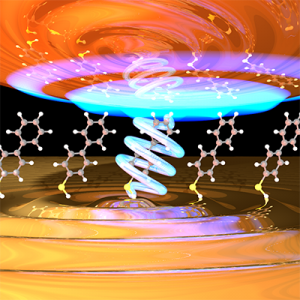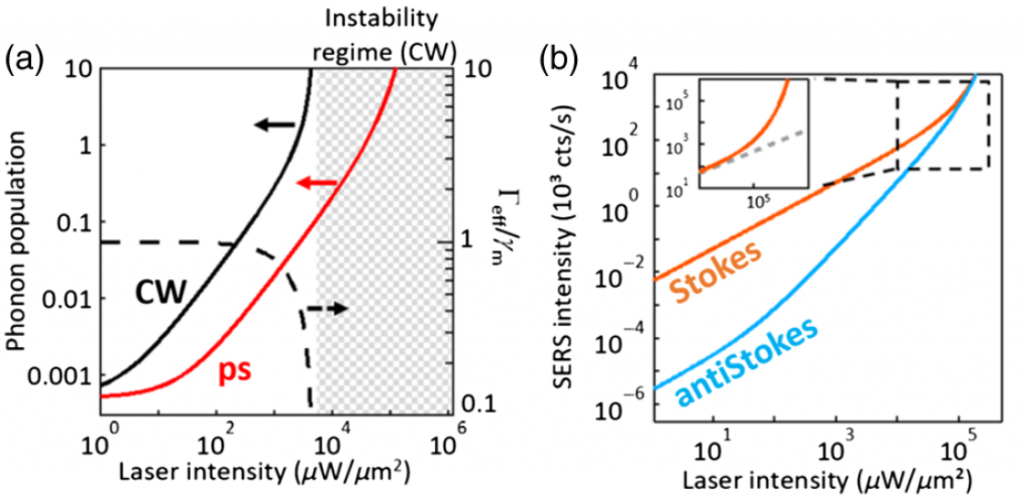
A new publication of the group in Phys. Rev. X describes the dynamics of molecular vibrations in plasmonic cavities under “pulsed” laser illumination. The relatively short duration of the illuminating laser pulse (picosecond) induces novel nonlinear effects in the vibrations of molecules (Stokes signal), which are identified experimentally in biphenyl-4-thiol (BPT) molecules located in plasmonic gaps by our collaborators at the Univ. of Cambridge. Pulsed molecular optomechanics allows for accessing new dynamical regimes of molecular vibrations which require specific theoretical descriptions within quantum nanooptics, as described in our paper.

Runaway molecular vibrations. (a) Comparison of the nonlinear buildup of incoherent phonon population (solid lines) for CW (black line) or pulsed (red line) illumination. In the latter case with 1-ps Gaussian pulses, the peak laser intensity and phonon population are used. Only for CW illumination does a clear threshold arise from the vanishing effective phonon decay rate (dashed line, normalized to the free-space phonon decay rate), interpreted as the phonon lasing (phasing) or instability regime. (b) Stokes (orange line) and anti-Stokes (blue line) dependence on the peak intensity of the pulsed illumination. Zoomed region (inset) highlights the superlinear predicted timeintegrated Stokes emission (linear shown dashed).
Source reference: Phys. Rev. X. 8, 011016 (2018).

